Topological insulators are a novel class of materials with non-trivial electronic properties. Electrons at the boundaries of these materials can propagate without dissipating energy [1]. So far, topological phases have only been demonstrated in inorganic materials. The goal of this project is to synthesise and characterise low-dimensional organic nanostructures, in which the atomic-scale morphology and electronic structure give rise to …
Honours Project: Growth and Characterization of 2D Topological Materials
Topological materials, such as topological insulators and topological Dirac semimetals, are a new class of matter that possess new and exciting electronic properties. Allowing a wide range of new physics to be explored including Majorana fermions and the Chiral anomaly to create revolutionary new electronic devices that have the potential to transport charge through one-dimensional edge modes without dissipation. In …
Honours Project: Femtosecond atomic-scale dynamics on a surface
The advent of scanning tunnelling microscopy more than 30 years ago has allowed for real-space imaging of single atoms and molecules on a surface. Normally, this technique is able to study the equilibrium properties of a system, and does not allow to access real-time ultrafast dynamics occurring at femtosecond timescales. Indeed, the intrinsic time resolution of scanning tunnelling microscopy is …
Honours Project: Dynamics of single molecules in a nanotube
The cell is a crowded environment where complex chemical reactions take place, typically involving only a few numbers of molecules. While a number of these reactions have been studied in bulk assays or even at the single molecule level, the role of crowded environment or confinement has typically not been investigated. The goal of this project is to study the …
Honours Project: Atom based potentials for atomtronics
Atomtronics is an emerging research area that seeks to develop devices that will exploit the unique properties of ultracold atoms to deliver benefits over conventional technologies. Potentials based on optical fields are currently used to manipulate and pattern ultracold atoms, which limits feature sizes to the wavelength of light. This project would investigate potentials for ultracold atoms based on atom-atom …
Honours Project: Dirac Electronic Materials
Recently new materials have emerged in which the electron dynamics are described by the Dirac equation in two dimensions. An example is graphene, the two-dimensional honeycomb lattice of carbon atoms that is the basic building block of graphite. In graphene, the electrons obey a massless Dirac equation, with the role of the relativistic electron spin played by a spinor (“pseudospin”) …
Honours Project: Defects and artificial atoms in 2D semiconductors
Atomically thin semiconductors, materials comprised of surface only, have remarkable electronic and optical properties and allow us to study basic physical concepts in a well-controlled environment. Besides this, these materials are envisioned to be used in future types of electronics, making them attractive for both basic and applied research. In 2D semiconductors, donor impurities (ions) and their bound electron, as well …
Honours Project: Bound states in a heteronuclear fermi gas
The development of ultracold atomic gases with tunable interactions and dimensionality has led to a new era of precision studies of fundamental quantum mechanical phenomena. In the context of few-body bound states, experiments have until now focussed on bosons, which display the celebrated Efimov effect, where three identical bosons can form a fractal set of states related by a discrete …
Honours Project: Atomic-scale structural and electronic studies on light-harvesting metal-halide perovskites
Hybrid organic-inorganic perovskites are an emerging class of photovoltaic materials with the potential to outperform silicon [1]. Solar cells made of metal-halide perovskite offer material costs below $2/m2 and certified efficiencies beyond 20%. However, the underlying physical mechanisms allowing for strong light absorption and efficient electron-hole separation in metal-halide perovskites are not fully understood. In particular, very few studies have …
Honours Project: Experiments on two-dimensional quantum turbulence
Two-dimensional turbulence is even more fascinating than its three-dimensional counterpart. Here, the turbulent energy is predicted to go into the formation of increasingly larger size eddies and vortices in a so-called inverse energy cascade process. Hence 2D turbulence exhibits a peculiar self-organization, giving rise to order out of chaos. This project will involve investigating two-dimensional turbulence in a superfluid atomic …
Monash: Growth and Characterization of 2D Topological Materials
Supervisors: Mark Edmonds and Prof Michael Fuhrer. Topological materials, such as topological insulators and topological Dirac semimetals, are a new class of matter that possess new and exciting electronic properties, allowing a wide range of new physics to be explored including Majorana fermions and the Chiral anomaly to creating revolutionary new electronic devices that have the potential to transport charge …
UNSW: Hole based quantum semiconductor devices
Supervisor: A/Prof. Alex Hamilton The spin-orbit interaction is central to topological insulators, Majorana fermions, and even the formation of artificial topological insulators from conventional semiconductors. The spin-orbit interaction couples the motion of an electron with it’s magnetic dipole moment – essentially generating an effective magnetic field that is proportional to the electron’s momentum. Galllium-Arsenide is the cleanest material system from …
UNSW: Mesoscopic devices in oxide heterostructure based 2D electron systems
Supervisor: A/Prof. Alex Hamilton The conducting interface between the two insulating oxides LaAlO3 and SrTiO3 (LAO/STO) exhibits many intriguing properties such as high mobility, a gate-tunable superconducting phase, ferroelectricity and ferromagnetism. The aim of this project, working in in close collaboration with FLEET colleagues in Materials science at UNSW, is to develop new techniques for fabricating nanoscale devices at the …
Swinburne: Floquet topological superfluidity in a 2D Fermi gas
Supervisor: Chris Vale, Paul Dyke The aim of this project is to study Floquet topological superfluidity using 2D gases of lithium-6 atoms in the vicinity of a p-wave Feshbach resonance. Experiments to date have found that gases prepared near a p-wave resonance become unstable due to inelastic losses. Recent theoretical work has identified a potential way to overcome these losses …
Swinburne: Topological superfluidity in ultracold atomic gases
Supervisor: Chris Vale, Sascha Hoinka, Carlos Kuhn The aim of this project is to produce a topological superfluid using a gas of ultracold dysprosium atoms in a quantum gas microscope. Dysprosium, with its long-range and anisotropic dipolar interactions, may provide new pathways for creating unconventional superfluids, with non-trivial topology. This project will involve working on a new experiment, currently being …
Monash: Atomic-scale structural, electronic and optoelectronic studies on light-harvesting metal-halide perovskites
Supervisor: Dr Agustin Schiffrin Hybrid organic-inorganic perovskites are an emerging class of photovoltaic materials with the potential to outperform silicon. Solar cells made of metal-halide perovskite offer material costs below $2/m2 and certified efficiencies beyond 20%. However, the underlying physical mechanisms allowing for strong light absorption and efficient electron-hole separation in metal-halide perovskites are not fully understood. In particular, very …
Research in Light-Transformed Materials
FLEET researchers undertake various research projects in the area of Light-Transformed Materials. If you have a project that would fit this theme, find information about a potential supervisor here: PROF. KRIS HELMERSON Ultracold atomic gases Biophysics Biotechnology A/PROF. MEERA PARISH Theory of strongly correlated phenomena in ultracold atomic gases and electron systems Superconductivity and superfluidity Lowdimensional systems Magnetotransport DR. AGUSTIN …
Research in Exciton Superfluids
FLEET researchers undertake various research projects in the area of Exciton Superfluids. If you have a project that would fit this theme, find information about a potential supervisor here: A/PROF. MEERA PARISH Theory of strongly correlated phenomena in ultracold atomic gases and electron systems Superconductivity and superfluidity Lowdimensional systems Magnetotransport A/PROF. QIAOLIANG BAO Atomically thin optical materials (graphene, 2D transition …
Research in Topological Materials
FLEET researchers undertake various research projects in the area of Topological Materials. If you have a project that would fit this theme, find information about a potential supervisor here: PROF. MICHAEL FUHRER Experiments on electronic devices made from novel two-dimensional materials such as graphene, layered transition metal dichalcogenides, topological insulators. Scanning tunnelling microscopy. Surface science A/PROF. NIKHIL MEDHEKAR Computational mechanics …
RMIT: Realizing high temperature quantum anomalous Hall effect in two dimensional topological insulators
Supervisor: A/Prof. Lan Wang Topological insulators are novel quantum materials discovered in recent years [1-6]. The material system has a bulk insulating state and a conducting edge state which has fascinating characteristics. Both three dimensional (3D) and two dimensional (2D) topological insulators have been experimentally realized. Two dimensional (2D) topological insulators are insulating in their interior, but support one-dimensional (1D) …
RMIT: Spin transport and spin transfer torque in heterostructures of two-dimensional materials
Supervisor: A/Prof. Lan Wang 2D materials: Dimensionality plays a crucial role in determining the fundamental properties of materials, which has already been strikingly high-lighted by the discovery of graphene [1]. Graphene has many attractive properties for electronics and spintronics, such as gate-tunable carrier concentration, exceptional high electric mobility (> 105 cm2V-1s-1 at room temperature) and long spin-diffusion length. Other novel …
Monash: Few and many-body physics in ultracold atomic gases
Supervisors: A/Prof. Meera Parish and Dr. Jesper Levinsen Ultracold atomic gases have emerged as an ideal platform for investigating the physics of strongly correlated materials in a highly controllable environment. The Theory of Quantum Matter group at Monash University works primarily at the interface between condensed matter physics and the physics of ultracold atoms. We are particularly interested in systems …
ANU: Exciton polaritons in 2D atomically thin materials
Supervisors: A/Prof. Elena Ostrovskaya and A/Prof. Andrew Truscott Atomically thin transition metal dichalcogenides represent a perfect 2D “flatland” platform for creating excitons with large binding energies and coupling them to light. Strong coupling to light and formation of exciton polaritons in open and monolythic microcavities has been very recently reported by several groups around the world. This project will aim …
ANU: Non-equilibrium quantum condensation of microcavity exciton polaritons
Supervisors: A/Prof. Elena Ostrovskaya and A/Prof. Andrew Truscott Exciton polaritons are bosonic composite particles that are part light and part matter. They are composed of photons and excitons (electron/hole pairs) forming in semiconductor microcavities in the strong light-matter interaction regime. Akin to ultracold neutral bosonic atoms, polaritons can undergo Bose-Einstein condensation. In a Bose-Einstein condensate (BEC), millions of bosons occupy …
UNSW: Electron-electron interactions in topological materials
Supervisor: A/Prof. Dimi Culcer Please contact A/Prof. Dimi Culcer at d.culcer@unsw.edu.au for further information. Interested applicants must meet UNSW PhD entry requirements. See https://research.unsw.edu.au/submit-application for more information.
UNSW: Spin-3/2 systems for fast, efficient information processing
Supervisor: A/Prof. Dimi Culcer Electrical control of spins could pave the way for scalable information platforms. The spin-orbit interaction provides a pathway towards this goal: an electric field changes the electron’s momentum and, through the spin-orbit interaction, it rotates its spin as well. Our recent work has found that certain spin bits based on spin-3/2 holes in semiconductors can be …
UNSW: Quantum transport and non-linear response in topological materials
Supervisor: A/Prof. Dimi Culcer Topological materials, such as topological insulators, Weyl semimetals, and strongly spin-orbit coupled semiconductors, have attracted considerable attention due to their potential in spin electronics and quantum computation. Recent work has revealed the presence of topological terms in their electrical response, which are generally associated with the Berry phase and lead to quantized values of e.g. certain …
PhD Application Information – University of Wollongong
Eligibility The entry to these degrees is based on a demonstrated capacity to undertake significant research in the proposed field. This means that you should have completed advanced coursework in a relevant field of study; initial research training in appropriate methods; and a research project resulting in a written report or comparable output. Research ability may be demonstrated in a …
Monash: Femtosecond atomic-scale dynamics on a surface
Supervisor: Dr. Agustin Schiffrin The advent of scanning tunnelling microscopy more than 30 years ago has allowed for real-space imaging of single atoms and molecules on a surface. Normally, this technique is able to study the equilibrium properties of a system, and does not allow to access real-time ultrafast dynamics occurring at femtosecond timescales. Indeed, the intrinsic time resolution of …
Monash: On-surface organic nano-electronics
Supervisor: Dr. Agustin Schiffrin Modern electronics relies on the control of electric charge in nanoscale devices. Current mass production methods for device miniaturisation are not only reaching their inherent limit, but are also facing fundamental challenges arising from quantum phenomena at the nanoscale. The design of next-generation electronic devices requires the development of radically new approaches to nanotechnology, including novel …









